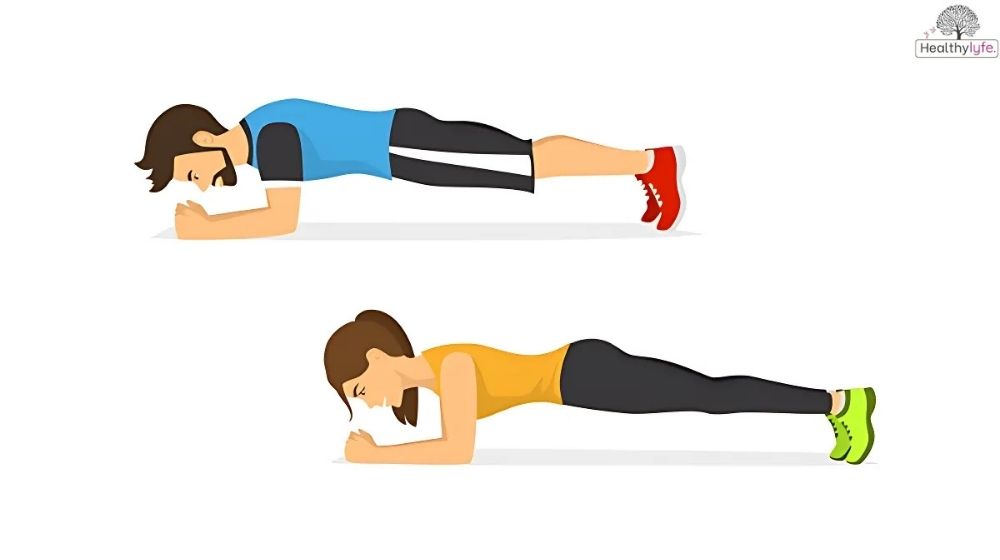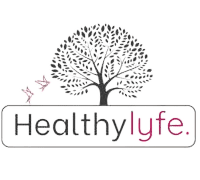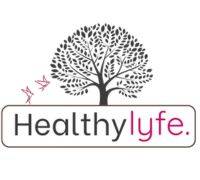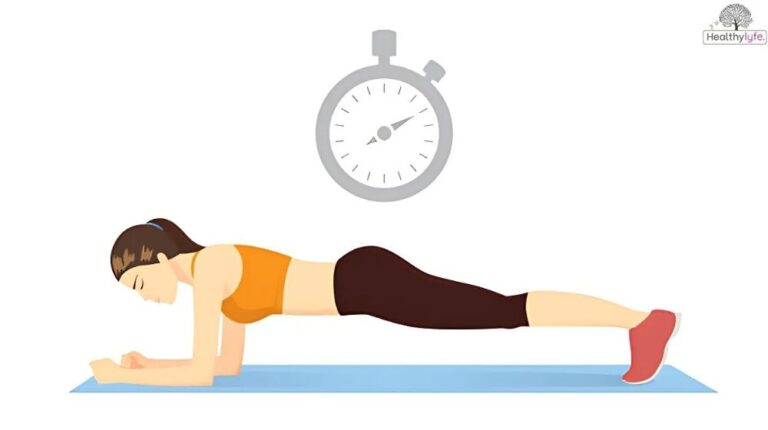Start your morning with planks – a simple yet effective exercise to strengthen your core, improve posture, and boost energy.
Introduction
Starting your day with planks can be one of the best ways to activate your core, improve your posture, and set a positive tone for the rest of your day. This simple yet powerful exercise engages multiple muscle groups, offering a full-body workout in just a few minutes. Whether you’re new to fitness or looking to enhance your routine, planks provide a variety of benefits that make them a must-try morning exercise. Let’s explore why adding planks to your morning routine can transform your overall fitness.
What Is Planks?
A plank is a simple yet effective exercise that targets your core muscles, including your abs, lower back, and hips. It’s done by holding your body in a straight line, supported by your forearms and toes, while engaging your core. This position helps improve your strength, stability, and endurance.

One of the best things about planks is that they don’t require any special equipment, making them easy to do anywhere. Whether you’re at home, at the gym, or even outdoors, you can perform planks to strengthen your core and improve your posture. Planks are also great for increasing flexibility, toning your muscles, and boosting overall body strength. By including planks in your regular workout routine, you can see major improvements in your fitness without spending a lot of time or needing complex equipment.
Type of Planks Exercise
There are several variations of plank exercises, each targeting different muscle groups and adding variety to your workout routine.
- Forearm Plank
The standard plank position where you support your body on your forearms and toes, keeping your body in a straight line. This engages your core, shoulders, and glutes. - High Plank (Push-up Plank)
In this variation, you support your body on your hands and toes, similar to the top of a push-up position. This works your arms, chest, and core. - Side Plank
A side plank involves lying on one side, supporting your body on one forearm and the side of your foot. This targets the obliques (side muscles) and helps improve balance and stability. - Plank with Leg Lift
Start in a forearm plank and lift one leg at a time while keeping your body stable. This challenges your core and glutes, adding difficulty to the traditional plank. - Plank with Arm Lift
In this variation, you lift one arm in front of you while maintaining the plank position. This increases the challenge for your core, shoulders, and stability. - Reverse Plank
In a reverse plank, you face upward with your hands and heels supporting your body. This targets your lower back, core, and glutes, providing a unique challenge. - Plank to Push-up
Start in a forearm plank and then push up onto your hands, one hand at a time, into a high plank. This variation engages your chest, arms, and core while improving upper body strength. - Plank Jacks
From the standard plank position, jump your feet apart and back together, similar to a jumping jack. This adds a cardio component and increases the intensity of your workout. - Plank with Shoulder Taps
While holding a high plank position, tap each shoulder with the opposite hand. This exercise challenges your core stability and helps to build shoulder strength. - Mountain Climber Plank
In a high plank position, alternate bringing your knees toward your chest, mimicking a climbing motion. This is a great full-body exercise that engages the core, arms, and legs while adding a cardio element.
Benefits of Planks Exercises [1]
Plank exercises are simple yet incredibly effective for building core strength and improving overall fitness. Unlike many exercises that isolate specific muscle groups, planks engage multiple muscles at once, making them a highly efficient workout. By holding a static position for a set amount of time, planks challenge your stability and endurance, offering a range of benefits that support both your fitness goals and your daily activities. Let’s explore the top benefits of plank exercises.
Strengthens the Core
Planks are primarily known for their ability to strengthen the core muscles, including the abs, lower back, and obliques. A strong core improves posture, balance, and stability, making everyday movements easier and more efficient.
Improves Posture
Holding a plank position helps strengthen the muscles along your spine, improving posture. Over time, this can help you stand taller and reduce slouching, which is especially beneficial for those who sit at desks for extended periods.
Enhances Flexibility
Planks help to stretch and lengthen muscles, especially in the back, shoulders, and legs. This improved flexibility can reduce muscle tightness and enhance your range of motion.
Increases Balance and Stability
Since planks require you to engage multiple muscle groups to maintain stability, they are excellent for improving balance. Whether you’re performing a side plank or adding a leg or arm lift, the exercise challenges your ability to stay stable and balanced.
Boosts Mental Endurance
Holding a plank for an extended period requires mental focus and discipline. This endurance improves both physical and mental strength, as you push through discomfort and focus on maintaining form.
Promotes Better Body Alignment
By engaging your entire body in a controlled position, planks help promote better body alignment. They train your body to maintain a neutral spine, which can prevent injuries and improve your overall body mechanics.
Burns Calories and Improves Metabolism
Plank exercises engage large muscle groups, which can help burn calories and increase your metabolism. Adding planks to your workout routine can boost fat-burning efforts, making them an effective part of a weight loss or toning program.
Strengthens Multiple Muscle Groups
While planks are best known for working the core, they also engage your arms, shoulders, legs, and glutes. This makes planks a full-body exercise that can help tone and strengthen muscles across your entire body.
Reduces the Risk of Back and Neck Injuries
A strong core helps support your spine and reduces the risk of injury to the lower back and neck. By improving core strength with planks, you’re helping to stabilize your back and improve overall spinal health.
Convenient and Low Impact
Planks require no special equipment and can be done anywhere, making them a convenient option for home workouts or when you’re traveling. They are also low-impact, which makes them suitable for people with joint issues or those looking for a safe way to improve strength without straining the body.
Common Myths About Doing Planks
Planks are one of the most effective bodyweight exercises, but there are several myths that may stop you from performing them correctly. Clearing up these misconceptions can help you get the most out of this powerful exercise. Let’s address the common myths about planks and set the record straight.
Myth: Planks Are Only for Advanced Athletes
Anyone can do planks, no matter your fitness level. You can start with short holds, even just 10-20 seconds, and gradually increase the time as your core strength improves. Planks can be adapted to fit your level.
Myth: You Need to Hold a Plank for a Long Time to See Results
You don’t need to hold a plank for minutes to see benefits. Short, well-formed planks (20-30 seconds) are just as effective. Focus on maintaining proper form and engaging your core muscles.
Myth: Planks Are Just for Your Abs
Planks are a full-body exercise. While they mainly target the core, they also engage the glutes, arms, shoulders, and legs. This makes planks an excellent way to build total body strength and stability.
Myth: Planks Are Bad for Your Lower Back
When done correctly, planks actually strengthen your lower back and improve posture. The key is to maintain a straight line from your head to heels, which will prevent strain on your lower back.
Myth: You Need to Do Planks Every Day to See Results
Overdoing planks isn’t necessary. Doing planks 2-3 times a week is enough to build strength. Just like any exercise, your muscles need time to recover to avoid fatigue and improve performance.
Tips for Success
Planks are a fantastic exercise for building core strength and improving overall fitness, but doing them correctly is key to maximizing their benefits. Here are some simple tips to help you succeed with your plank workouts:

Maintain Proper Form
One of the most important aspects of a plank is maintaining good form. Your body should form a straight line from your head to your heels. Avoid letting your hips sag or sticking your butt up in the air, as this can lead to ineffective results and strain on your lower back.
Engage Your Core
To get the most out of your plank, it’s crucial to engage your core muscles. Pull your belly button toward your spine and keep your abs tight throughout the hold. This will activate your core and prevent strain on your back.
Start Slowly and Build Up
If you’re new to planks, don’t worry about holding the position for long periods at first. Start with 20-30 seconds, and gradually increase the time as your core strength improves. Quality is more important than duration.
Breathe Steadily
It’s easy to forget to breathe when holding a plank, but steady breathing is important to maintain endurance and prevent unnecessary tension. Breathe deeply and steadily, focusing on keeping your body relaxed.
Focus on Quality, Not Quantity
Don’t rush through your planks or try to hold them for as long as possible. Focus on doing them with proper form and engaging your muscles effectively. It’s better to do a short plank with good form than a longer one that’s sloppy.
Mix It Up with Variations
To avoid plateauing and to challenge your body in different ways, incorporate plank variations into your routine. Side planks, plank leg lifts, and plank shoulder taps are great options that target different muscle groups and add variety.
Add Planks to Your Routine Gradually
Incorporate planks into your fitness routine 2-3 times per week. Giving your body time to rest between plank sessions will help you build strength without overtraining your muscles.
Use a Timer
For beginners, using a timer can help you keep track of how long you’re holding your plank. This will allow you to set goals and track your progress over time.
Engage Other Muscle Groups
While holding your plank, make sure to engage other muscles like your legs and glutes. Tightening your glutes and squeezing your thighs will provide more stability and enhance the benefits of the exercise.
Don’t Overdo It
Planks are challenging, but doing too many can lead to fatigue and poor form. Start with a manageable number of sets and focus on quality. Over time, you can increase the duration and number of sets as your strength improves.
Conclusion
Triceps and biceps exercises are important for building strong, toned arms and improving upper body strength. These muscles work together, with biceps helping with pulling movements and triceps with pushing movements. A balanced workout that targets both muscles ensures even growth and helps prevent injuries. To get the best results, include a mix of exercises like bicep curls, tricep extensions, pull-ups, and bench presses. Focus on using proper form to avoid injuries and start with lighter weights, increasing them gradually.
FAQs about Planks
What are planks?
Planks are a core-strengthening exercise where you hold a position similar to a push-up, engaging your abs, back, and shoulders for a set period.
What muscles do planks work?
Planks primarily work the core (abs, obliques, lower back), but also engage the shoulders, arms, chest, and glutes.
How long should I hold a plank?
Beginners should aim for 20-30 seconds, while more advanced individuals can work up to 1-2 minutes or longer.
Are planks better than crunches?
Yes, planks engage more muscles than crunches, providing a full-body workout and helping to improve overall core strength and stability.
How often should I do planks?
Planks can be done 3-4 times a week for maximum benefits, allowing time for recovery between sessions.
Can planks help with belly fat?
While planks alone won’t burn belly fat, they can help build muscle, which increases metabolism and supports fat loss when combined with a healthy diet and cardio exercise.
What is the proper form for a plank?
Keep your body in a straight line from head to heels, engage your core, and avoid letting your hips sag or pike upward. Elbows should be directly beneath the shoulders.
How can I make planks easier if I’m a beginner?
Start by doing a modified plank on your knees instead of your toes to reduce the intensity. Gradually increase your hold time as you build strength.
Are side planks effective?
Yes! Side planks target the obliques, helping improve lateral core strength, balance, and stability.
What are the benefits of planks?
Planks improve core strength, posture, flexibility, balance, and endurance, and can also reduce the risk of back pain.
Can planks improve my posture?
Yes, planks help strengthen the muscles that support your spine, leading to better posture, especially when sitting or standing for long periods.
Can planks cause lower back pain?
If done incorrectly, planks can cause strain on the lower back. Make sure your core is engaged, and your body forms a straight line. Avoid letting your hips sag.
How do I progress with planks?
Gradually increase the duration of your plank hold, or try advanced variations like plank leg lifts, side planks, or plank to push-up transitions.
Can planks help with muscle tone?
Yes, planks help tone the muscles of the core, arms, and legs. Regular planking can lead to improved muscle definition and endurance.
Are planks suitable for beginners?
Yes, planks can be done by beginners with proper modifications, such as starting with knee planks or holding for shorter durations.
What is a plank challenge?
A plank challenge is a fitness routine where you progressively increase your plank hold duration over time, often aiming to hold a plank for a certain amount of time each day.
How many calories do you burn doing planks?
Planks burn around 2-5 calories per minute, depending on your body weight, muscle engagement, and plank variations.
Can I do planks every day?
Yes, planks can be done daily if performed with proper form, but ensure you give your core muscles time to recover to avoid overtraining.
What are the most common mistakes when doing planks?
Common mistakes include sagging hips, arching the back, not engaging the core, or holding the position for too long without proper form.
Can planks improve my balance?
Yes, planks improve balance by strengthening stabilizing muscles, particularly in the core, which are crucial for maintaining good posture and stability during various movements.
By healthylyfe


